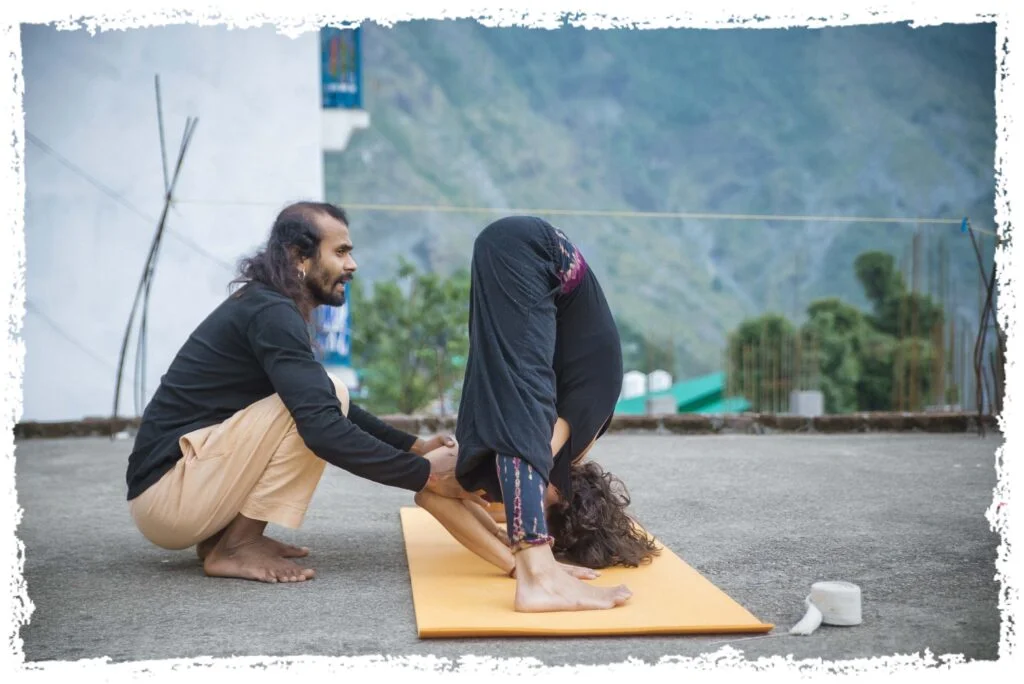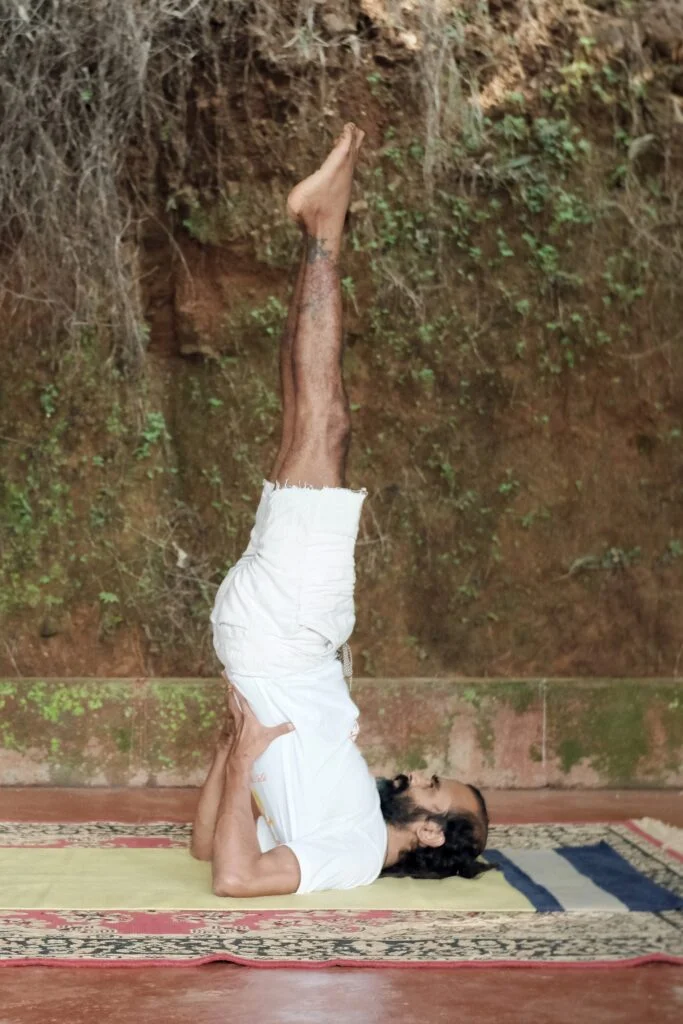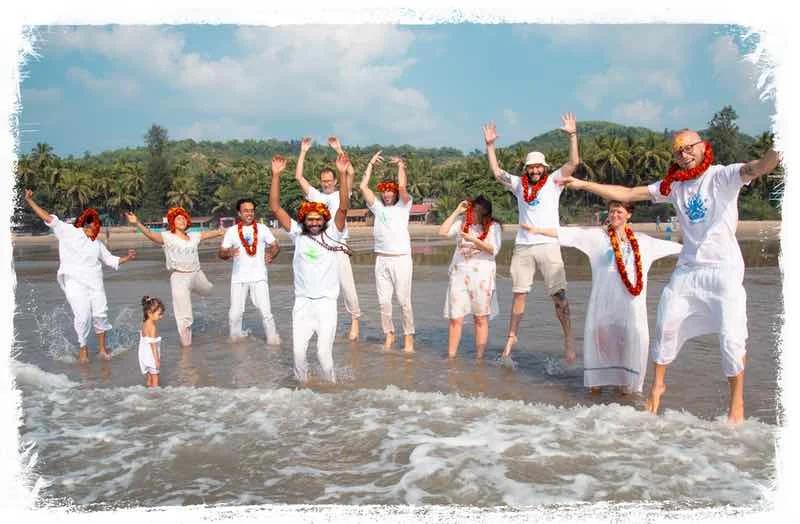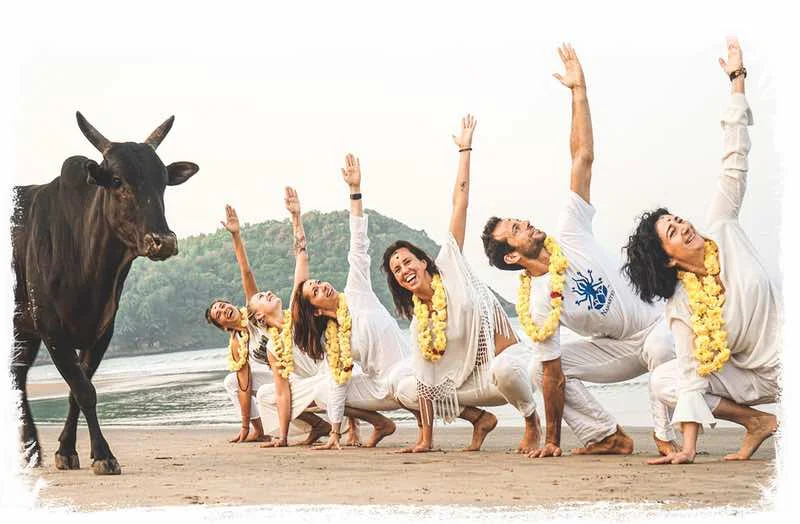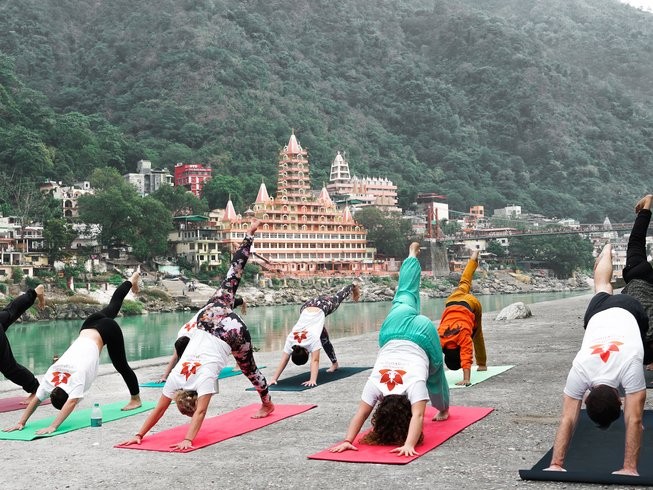Ashtanga Vinyasa is one of the systems of Hatha yoga that synchronises breath and movement in a flowing sequence of asana. Each asana has a unique number of movements into and out of it (which are also called vinyasa). When practiced regularly, Ashtanga Vinyasa can help to develop strength, flexibility, stamina and to cultivate an all – round feeling of well being and focused mind.
This method was develop in Mysore by Sri K. Patthabi Jois who learned it from his guru, Sri T. Krishnamacharya. Initially this style of yoga was designed as a training for the soldiers at the army of the Maharaja of Mysore and its name. Only in the mid 60’s Patthabi Jois started to teach western students in Mysore; he then made several trips worldwide at the invitation of his students to propagate this form of yoga.
In Ashtanga Yoga the set sequence of postures is repeated each time we practice, so that the sequence becomes familiar, and in doing so we develop a self practice.
When practiced mindfully and in a way that supports each individual person, this system of yoga can be very therapeutic.
The fundamental practices of Ashtanga Yoga are: the Tristana method (asana/ujjayi breath/drishti), Vinyasa (syncronized breath and movement) and bandhas (energetic lock or holds).
In your Ashtanga TTC you will learn the primary series set of asana and you will be practicing it both in led class and in Mysore style, so that you will get stronger day after day and you will memorize the sequence. Both styles of classes will happen under the attentive guide of your asana teacher.
In your art of teaching classes you will go through all the postures of the primary series and how to modify and adjust according to the different anatomies of people.
In the philosophy class you will go in depth in the learning of the Ashtanga Yoga (eight limbs of Raja Yoga) as explained by the great sage Patanjali in the Yoga Sutras.
Category
- Teacher's Training
- 100 Hours YTTC
Styles
- Ashtanga Yoga
- Hatha Yoga
Skill level
- Beginner
- Intermediate
- Advance
Food Type
- Vegetarian
Meals
- Breakfast
- Lunch
- Dinner
Retreat For
- Family Friendly
- Solo Traveller
- For Couples
Stay Not Available
Meet the instructors

Hari Pawali
I am Hari Pawali and welcome to Shree Hari Yoga School. I founded the school with the goal of providing affordable high-quality training in yoga and the healing arts, with students of all paths and levels. I set forth to create an inclusive community of students and teachers where all feel welcomed and where I could share the knowledge and experien... Read More
Hari Pawali

Mayank Patel
Designation: Yoga Professional with 7 years of rich work experience in teaching Yoga to groups and individuals in India and Cambodia. Teaching Experience: Expertise in the areas of Teaching multilevel yoga classes ,stress management ,diet management, Himalayan Sound Healing , Depression counselling , Life Management Through Bhagwad Geeta .... Read More
Mayank Patel
Program
Day 1
| 07:00 am - 08:00 am | Pranayama, meditation or cleansing (Kriya) |
| 08:00 am - 09:30 am | Asana practice & last week practicum |
| 09:30 am - 10:30 am | Silent breakfast |
| 10:30 am - 11:30 am | Art of Teaching |
| 11:30 am - 12:30 pm | Anatomy & physiology |
| 12:30 pm - 02:00 pm | Lunch |
| 02:00 pm - 03:00 pm | Self Study |
| 03:00 pm - 04:00 pm | Philosophy |
| 04:00 pm - 05:30 pm | Asana practice & last week practicum |
| 05:30 pm - 06:00 pm | Karma Yoga |
| 06:00 pm - 07:00 pm | Meditation/Learn how to chant your mantras & understand mudras |
| 07:00 pm - 08:00 pm | Dinner |
| 08:00 pm - 05:00 am | Bed Time |
Mantras & Mudras
-
Mantras are considered as an important part of Ashtanga Yoga. When you recite mantras, the energy channels of the body open up, and you become more reception to the universe. It also aids one to focus the mind on the yoga practice. When you recite mantras, your stored emotions are released and you get the full benefits of the asanas.
Mudras are nothing but gestures, which you make with your hands and fingers mostly. There are nerves that pass through the fingertips, and each one is connected to a specific organ. When you press the same, you are actually providing therapeutic healing to those body parts.

